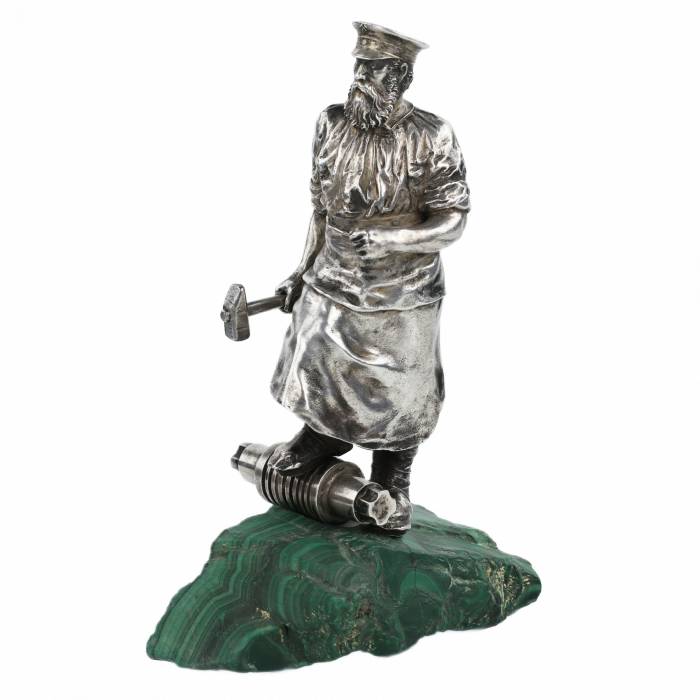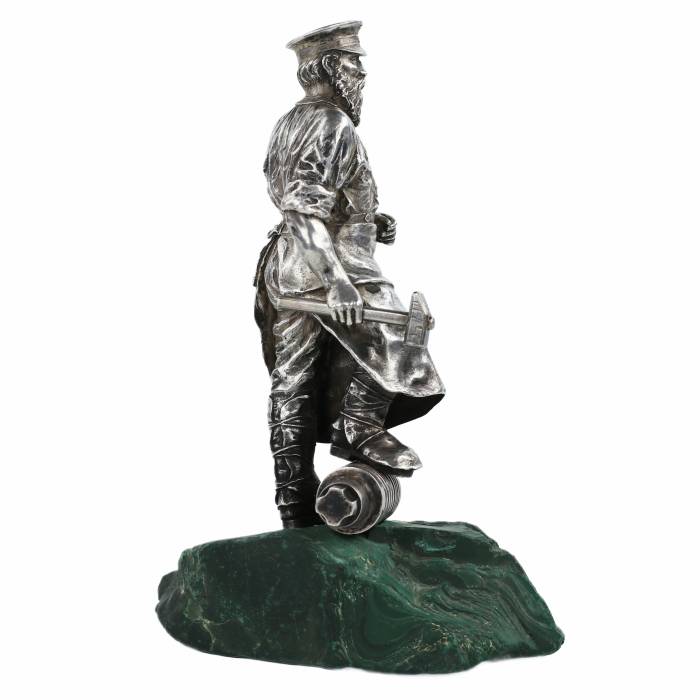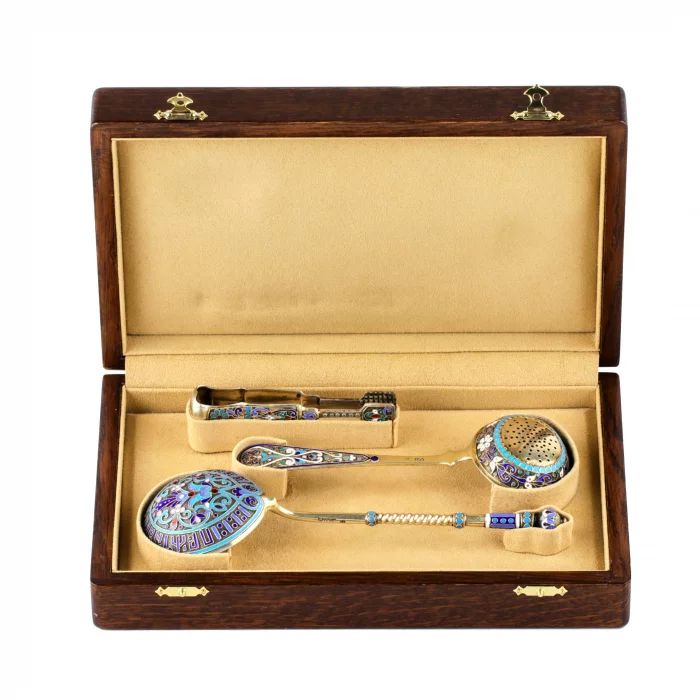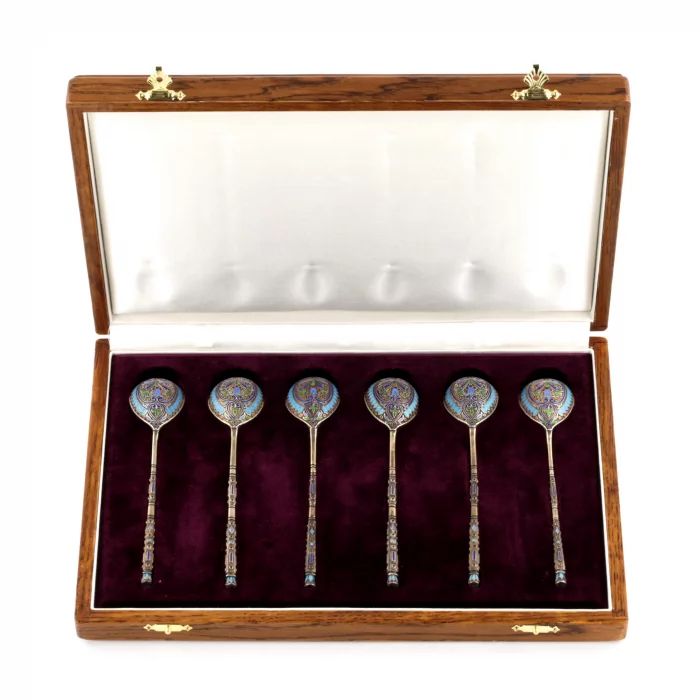
AntiqonART consultant will contact you within one business day after receiving your request.
Thank you for your request!
Our consultant will contact you soon.

AntiqonART consultant will contact you within one business day after receiving your request.











Condition: Excellent preservation. Original patina. Fully legible hallmarks.
Dimensions: Height 19 cm. Width 13 cm. Weight:1010 g.
Hallmarks: Assay mark of the Moscow District Assay Office (1908–1917) — female head in kokoshnik facing right with the silver standard “84”; maker’s mark 1-яА in a rectangular cartouche with chamfered corners — 1st Moscow Artel of Jewellers.
The creation of the artel was a response to the growing need to protect the interests of artisans and to preserve a high level of artistic and technical execution in jewellery production. The artel functioned as a cooperative: each master contributed to shared production while retaining creative freedom.
Works produced by the 1st Moscow Artel were renowned for their high quality, strict hallmark compliance, attention to detail, and rich artistic design. The artel created a wide range of items—from table silver and ecclesiastical objects to decorative sculptures, snuffboxes, cigarette cases, and presentation pieces. Of particular distinction were silver presentation sculptures with stone or marble bases, demonstrating mastery in small-scale sculpture and the realism characteristic of the turn of the 20th century.
All pieces were marked with the appropriate assay hallmark (most commonly the kokoshnik profile facing right) and a maker’s mark in the form of “1-яА” within a rectangular shield with chamfered corners.
Until 1917, the artel actively participated in exhibitions, maintained a private clientele among high-ranking Imperial officials, and supplied goods to the domestic market. After the October Revolution and the nationalization of private industry, the artel ceased operations, and its craftsmen either joined state jewellery workshops or emigrated abroad.














